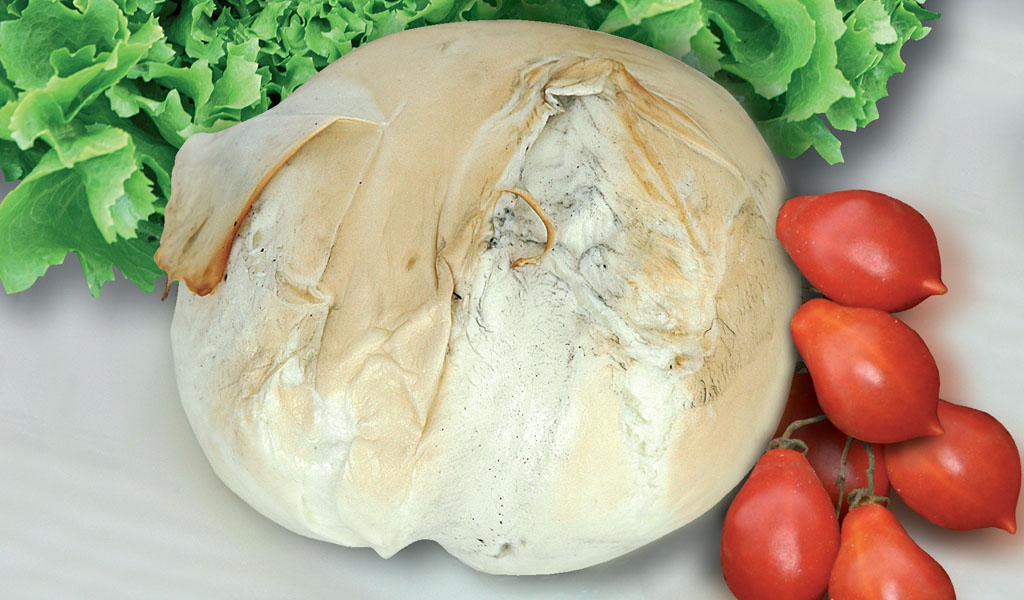Prodotti tradizionali
Provola affumicata

La provola affumicata è una specialità prodotta in tutta la regione Campania, e in particolare nelle aree della valle del Volturno, Penisola Sorrentina, Vallo di Diano, Irpinia, Sannio, Matese. Si tratta di un formaggio che condivide con la mozzarella l'antichità dell'origine e delle tecniche di produzione che sono, tra l'altro, molto simili. Anche la provola è ottenuta dalla trasformazione di latte crudo di vacca e l'origine del suo nome deriva, per l'appunto, dal fatto che era la "prova" cioè il campione che veniva immerso nell'acqua bollente per stabilire se la cagliata era pronta per la filatura. A differenza della mozzarella, non deve necessariamente essere consumata fresca, ma può essere conservata per un tempo maggiore; probabilmente è questo il motivo per cui anticamente godeva di maggiore fama rispetto alla mozzarella: ne è prova la sua presenza nelle rappresentazioni dei celeberrimi presepi napoletani del ‘700 a fronte della totale assenza di mozzarella e fior di latte. La provola, al termine della lavorazione, che prevede una fase di filatura più lunga rispetto a quella della mozzarella, per ottenere una pasta più consistente, viene posta in un ambiente chiuso a contatto con fumo derivante da paglia umida bruciata per alcuni minuti, cosicché acquisisce un sapore, un colore e un aroma tipico del fumo. Soprattutto nel Salernitano si produce la provola affumicata seguendo lo stesso procedimento descritto, ma utilizzando esclusivamente latte di bufale.
Smoked provola is a specialty produced everywhere in Campania, and in particular in the areas of Volturno Valley, Sorrento Peninsula, Vallo di Diano, Irpinia, Sannio and Matese. It's a cheese that shares with mozzarella the ancient origin and the production techniques that are very similar. Provola too is obtained from the transformation of raw cow milk ad the origin of its name probably derives from the fact that it was the "attempt" (prova), that is the sample that was immersed in the boiling water to establish if the curd was ready for the kneading. Differently from mozzarella, it doesn't have to be eaten fresh, but it can be kept for a longer time; this is probably why it was more famous in ancient times than mozzarella: and proof is its presence in the famous Neapolitan nativity scenes of ‘700 where mozzarella and fior di latte are totally absent. Provola, at the end of the transformation, that has a longer kneading phase than mozzarella, to obtain a more consistent pulp, is left for a few minutes in a closed place in contact with the smoke that comes from humid burning hay, to acquire its taste, the colour and flavour typical of smoke. Especially in the province of Salerno smoked provola is produced with the procedure described, but using exclusively buffalo milk.